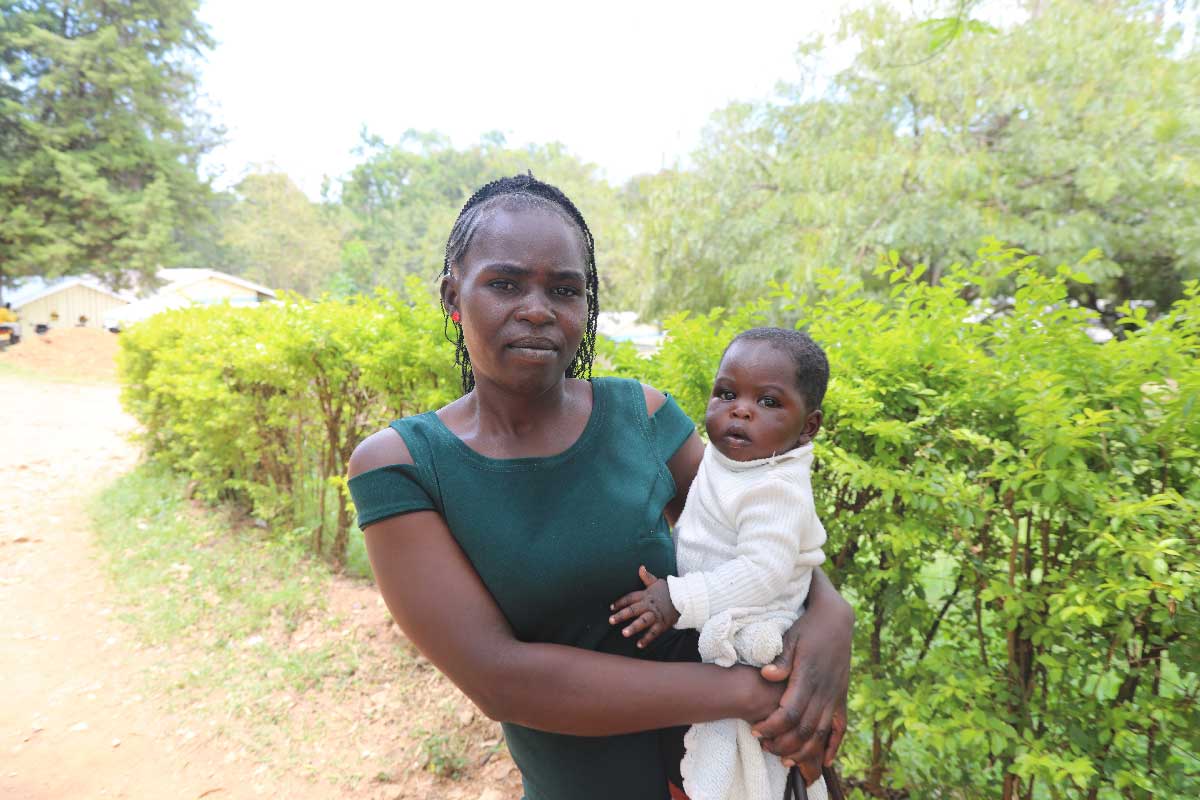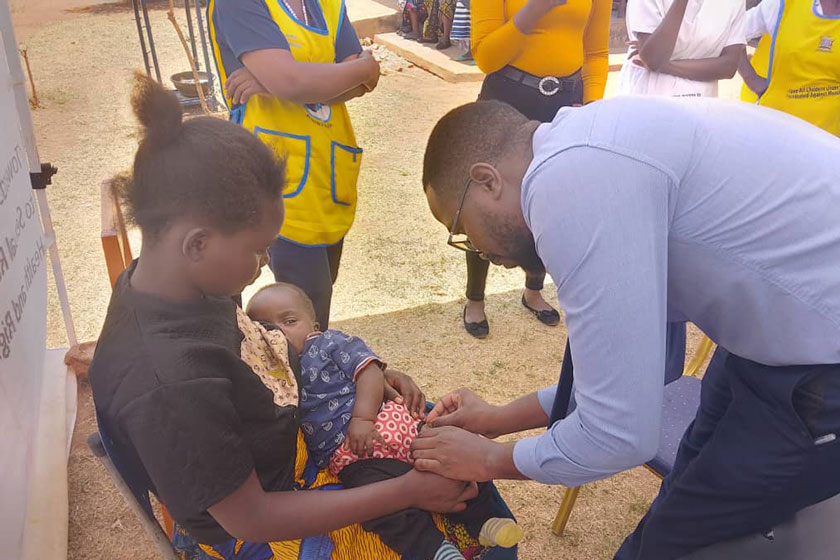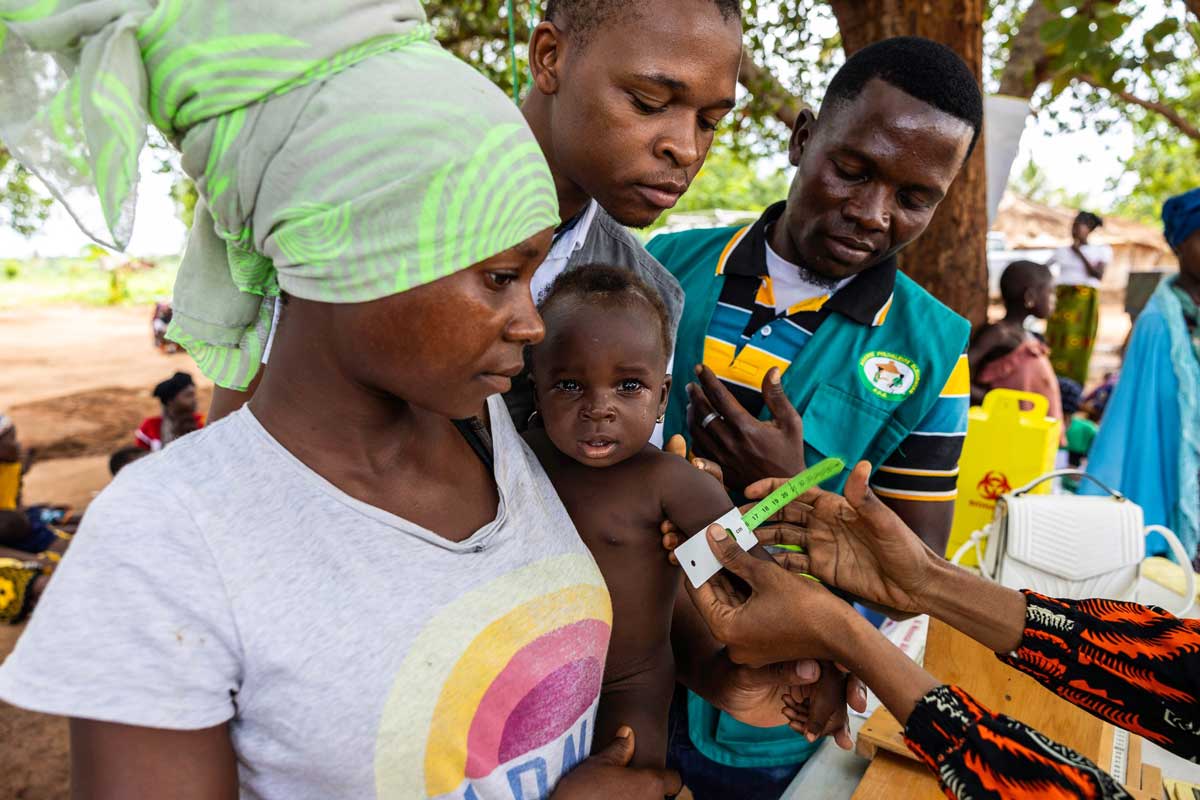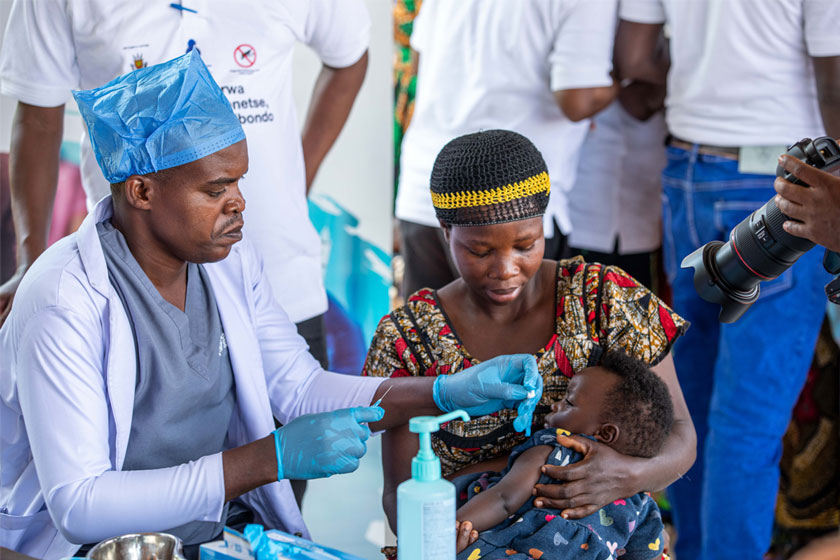Mozambique revs up rotavirus vaccination in rural Zambezia province
Rotavirus vaccine coverage took a hit during the pandemic in populous Zambezia province, Mozambique. Now authorities are racing to catch up.
- 14 November 2025
- 5 min read
- by Winile Ximba

In the stormy days of the COVID-19 crisis, as many immunisation programmes faltered, rotavirus vaccine coverage across Mozambique climbed from 67% to 75%.
These were encouraging, and against-the-odds strides in the fight against diarrhoea-related illness and mortality in children.
But behind this national-level story of progress, Zambezia – the country’s central-coastal province – lagged. Here, in the country’s second-most populous province, rotavirus vaccination for children went into decline during the pandemic.
That was worrying: rotavirus is a leading cause of moderate-to-severe diarrhoea in Mozambique, which in turn is a leading cause of death in early childhood.
Five years on, Zambezia is “racing” to catch up, says Quinhas Fernandes, the National Director of Public Health at Mozambique’s Ministry of Health.
The dip
There are a plethora of reasons why Zambezia became an outlier.
Sampling research conducted across Zambezia, and published in March, identified some of them: long waiting periods for vaccination appointments amid the pandemic squeeze, travel challenges within the vast and rugged province, and limited numbers of health workers staffing public clinics all contributed to missed or delayed immunisation.
But the main impediment to rotavirus uptake after March 2020 – the beginning of the pandemic for Mozambique – were borders set up within the province. These limited human movement in Zambezia, says Alculete Araújo, mayor of Quelimane, the province’s largest city.
“Zambezia is one of the country’s largest provinces. With distances stretched, human mobility and the ability to maintain rotavirus vaccination got impacted too,” he says.
Then, as COVID-19 began to spread in Zambezia, panic set in, spreading by be social media and word-of-mouth. Frightened parents considered getting the COVID-19 vaccine, or in its absence, sheltering in place, as more important than other than ‘the normal’ rotavirus disease vaccine, says Jameline Dube, a paediatric nurse at Hospital Central de Quelimane and community health peer educator.
Mercia Chilongo, 40, a mother in Gurue, a semi-rural small town near the centre of the largely rural province, recalls the confusion of the early pandemic. “We were bombarded with so much panic information (some of it fake): from WhatsApp, community elders, teachers, some nurses themselves, pastors, prophets. It said COVID was an existential pandemic like the onset of AIDS in the ’90s. We dropped all hospital visits, forgot about rotavirus, sat at home fearful of the ‘big bang’,” she says.
The controllos, as Mozambique’s notoriously ‘rough’ and numerous police highway roadblocks are known, intensified and got ‘insane’, Chilongo adds.
“We couldn’t go harvest our sorghum fields one kilometre away without encountering a police roadblock demanding IDs and an anti-COVID mask or sanitiser. How could we even think of travelling more miles away to the clinic for the rotavirus thing?” she asks.
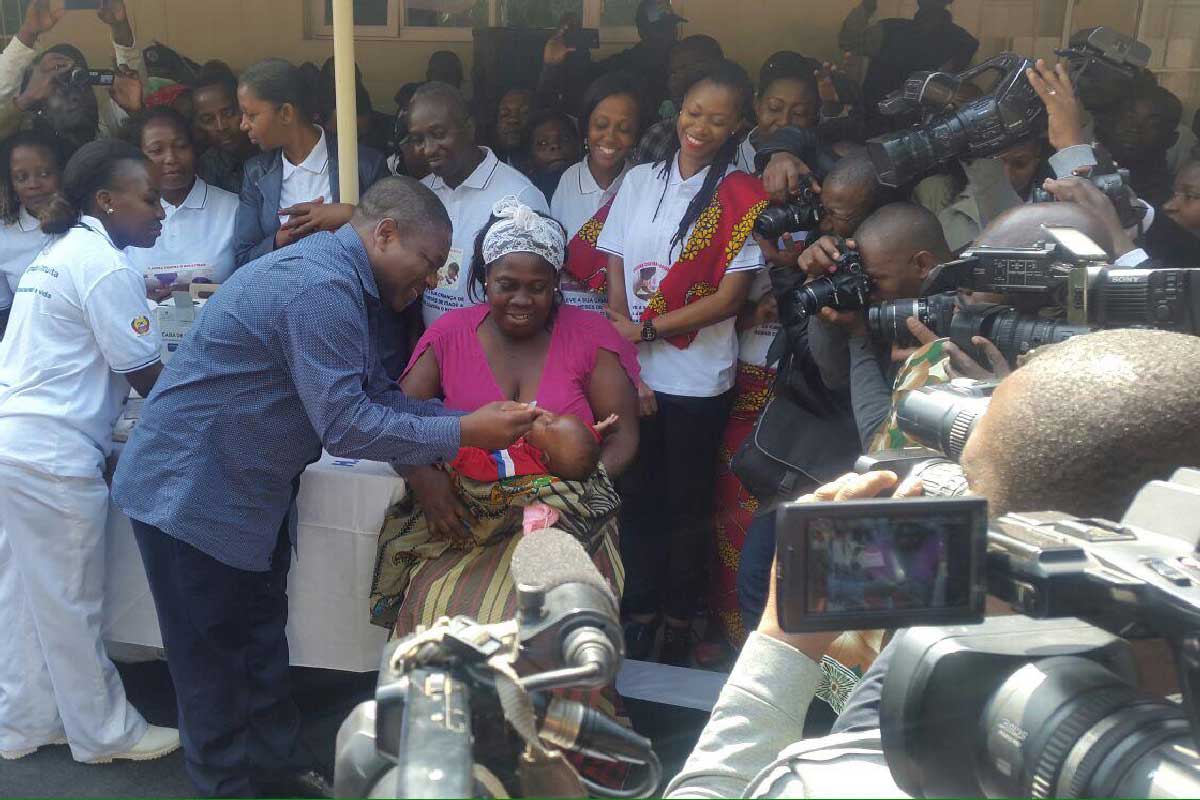
Health sector resource crunch
Nurses and community healthcare patrollers were in “panic-mode, too” according to Dube – that is, focusing their resources on protecting their families against COVID-19. This meant often not coming to work at the clinics or stopping all street public health patrols. Rotavirus became a complete “afterthought”, she says.
She contrasts the Zambezia experience to that of southern-lying Maputo, the most urbanised province of Mozambique. There, a denser network of clinics, resources, doctors and nurses meant the usual rotavirus vaccination drive continued side-by-side with new anti-COVID-19 measures.
Have you read?
Catching up
Today, panic-mode is in the past, and Zambezia is busy making up for lost time on rotavirus coverage, says Pia Matos, the governor of Zambezia.
The aggressive catch-up initiative, led by the provincial government and Ministry of Health, picked up pace in late 2023, targeting all parts of the province but doubling down especially in rural districts.
“We’ll double. We aim to vaccinate at least 5,000 children with the very first dose in third quarter 2025 versus half, same period, in 2024,” Matos says. The drive involves sending out hundreds of community volunteers, health workers with megaphones, bicycles, motorised roadshows, music concerts, and sensitising mothers who come to clinics for other reasons than the need for rotavirus vaccination for their kids.
Hundreds of church pastors, community herbalists and mosque leaders across Zambezia have been trained too by the Ministry of Health, so that they are equipped to explain the benefits of rotavirus vaccination to their clients and congregants.
“Not a month has passed by in my township without a Ministry of Health truck towing rotavirus vaccination posters and making slow drives with musicians in T-shirts singing up the message on rotavirus vaccine,” says Ona Bhunu, 39, a mother of twins in Icidua, one of the poorest neighbourhoods of Quelimane.
Bhunu was one of the mothers who needed that reminder. She’d fallen behind on her children’s rotavirus immunisations during the pandemic, but remedied that in May 2024 when the public messaging reached her.
Keeping children diarrhoea-free in Icidua isn’t easy, she reports – safe municipal water is a privilege of more affluent suburbs. “The vaccination gives peace of mind for our babies,” she says.
Dube and her colleagues are also on the case. “Our job is to ask all mothers coming into the clinic for HIV tests, family planning, or HPV stuff: ‘Hey, the COVID crisis is over – does you or anyone you know haven’t got the rotavirus vaccine for your kids?’”
The rotavirus publicity blitz is yielding “gradual results” at the Hospital Central de Quelimane, she says. In 2022, the rate of rotavirus vaccination had fallen to a low of 50 per month. Currently, the hospital delivers an average of 220 doses of rotavirus a month – a 4.4-fold increase in three years. “The messaging is finding fertile ears,” Dube says.
More from Winile Ximba
Recommended for you

